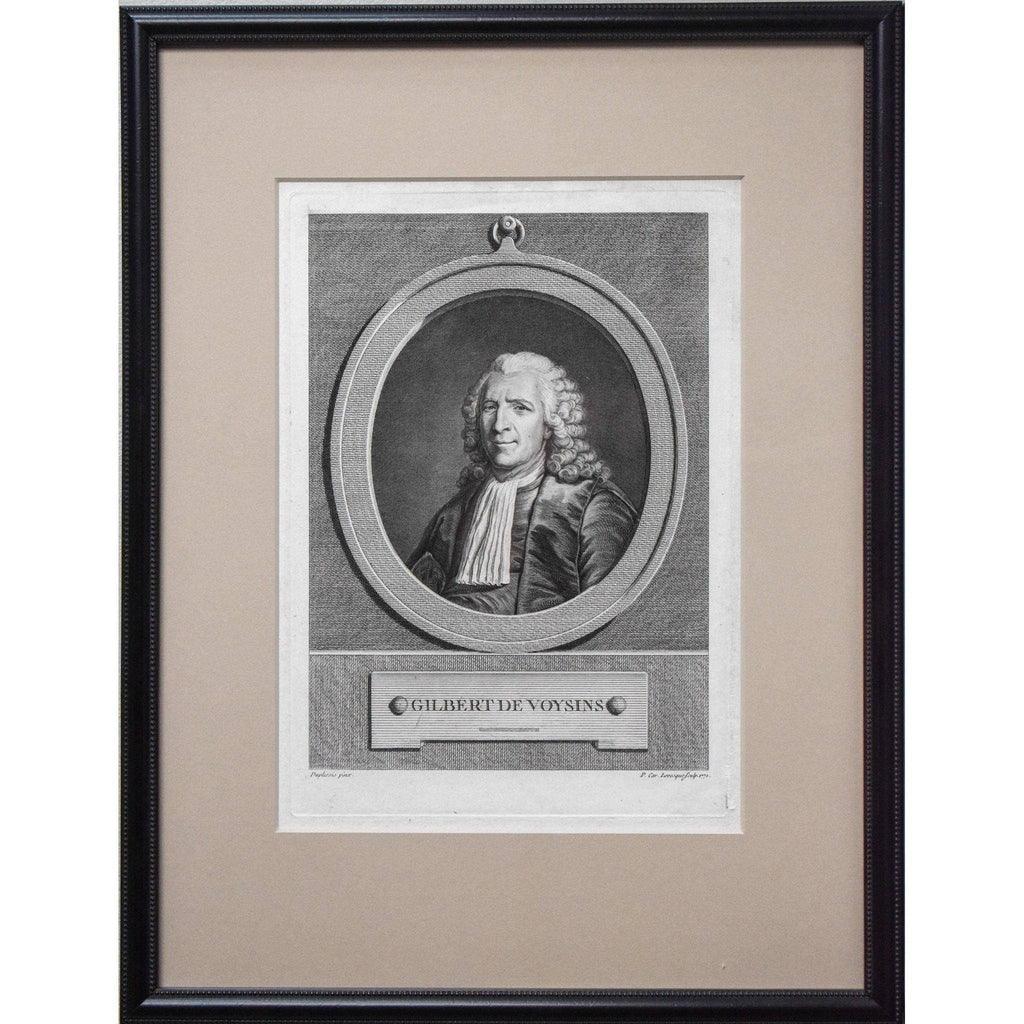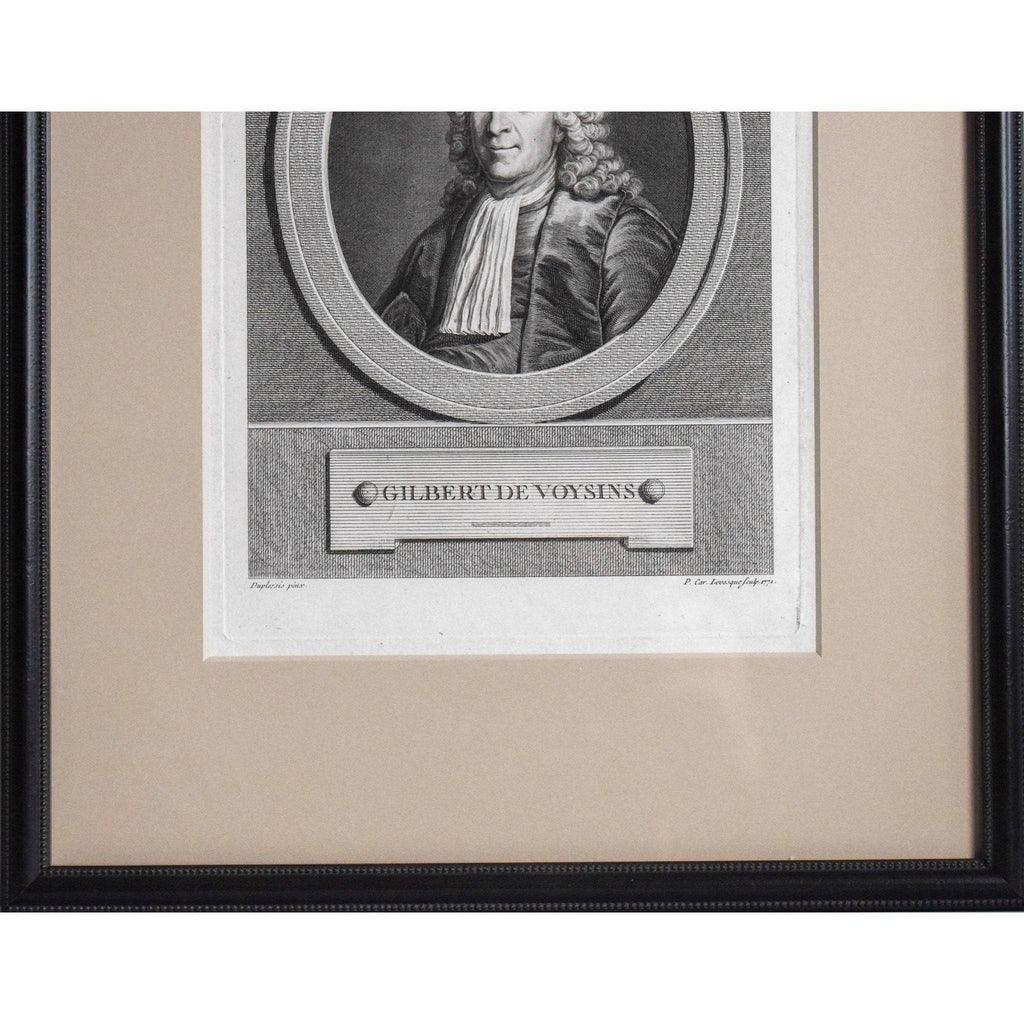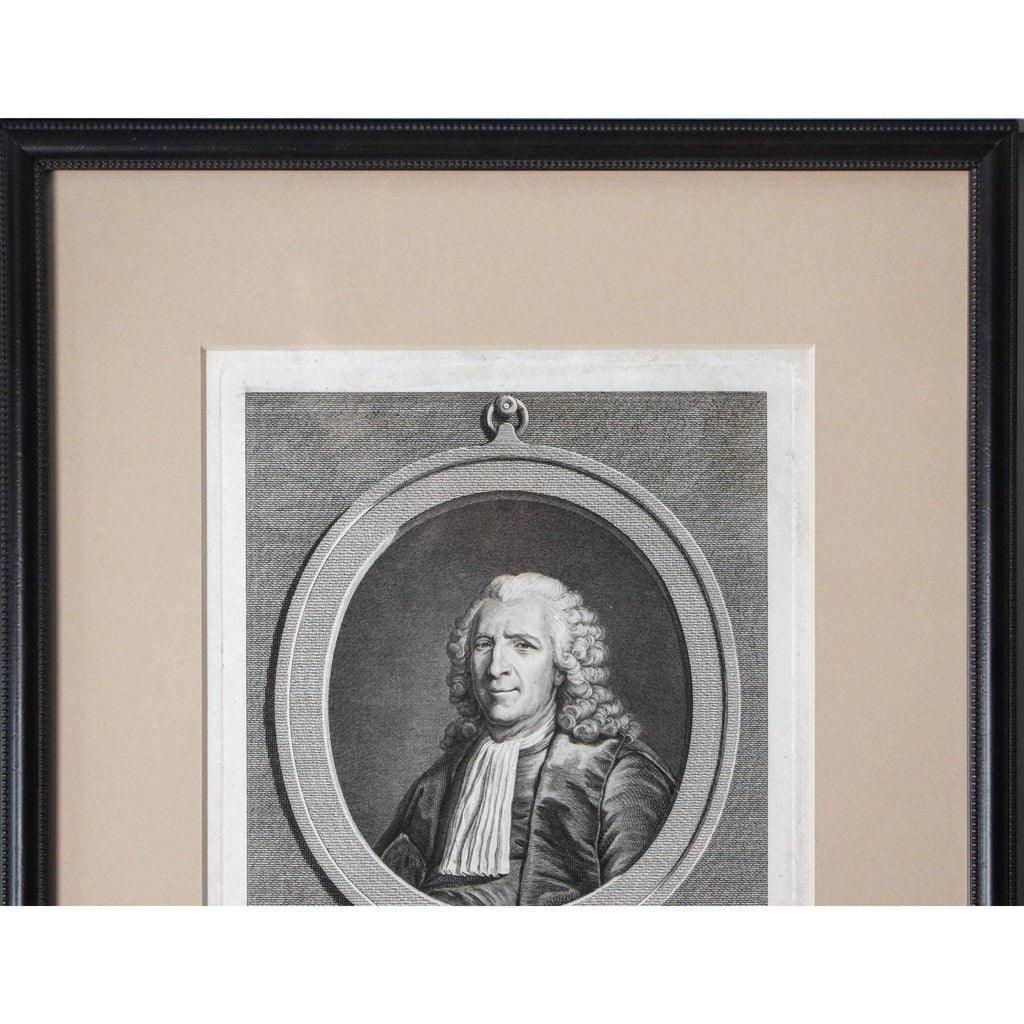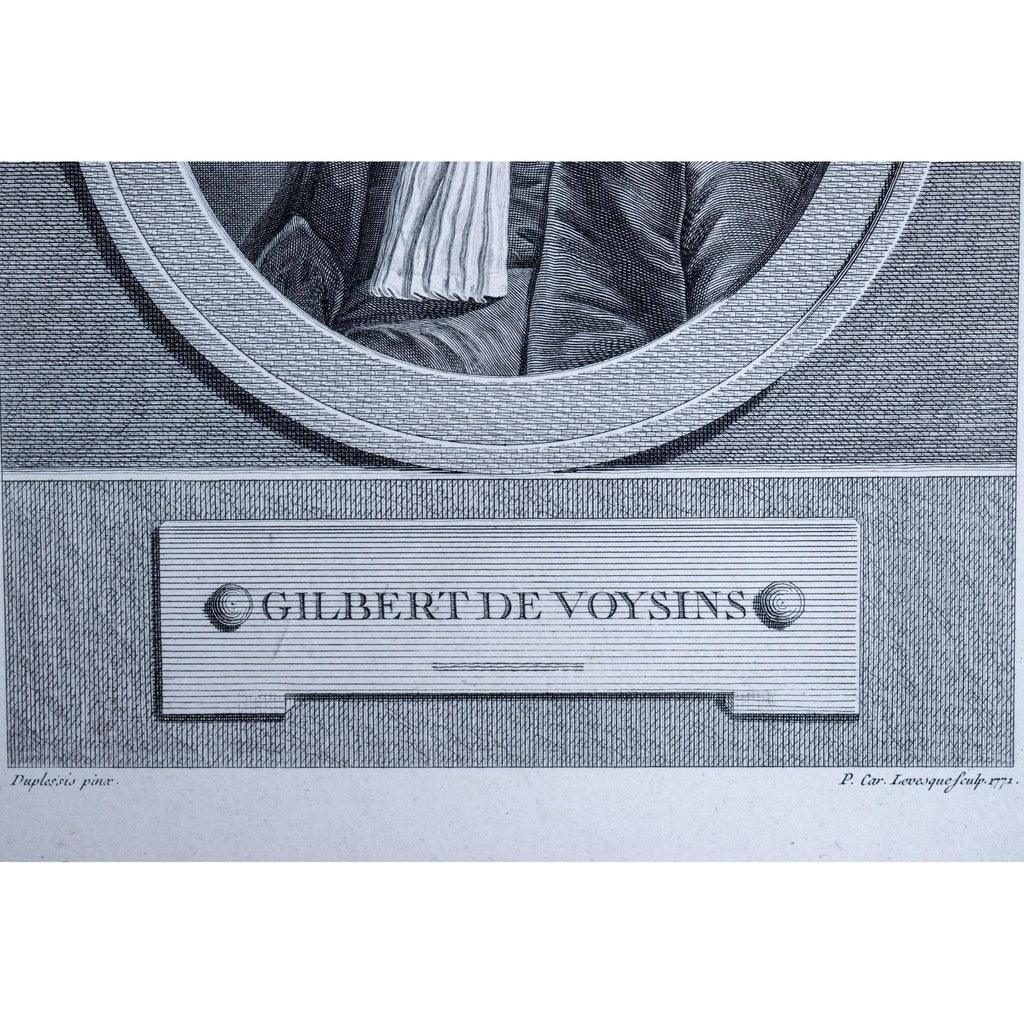Pierre Charles Lévêque - Portrait Of Gilbert De Voisins
Pierre Charles Lévêque - Portrait Of Gilbert De Voisins
Couldn't load pickup availability
Share
Etching representing a portrait of Pierre VI Gilbert de Voisins, bust directed to the left, smiling, wearing a long, powdered wig and cravat. In an oval frame, made in 1771 by Pierre Charles Lévêque, after Duplessis.
Pierre VI Gilbert de Voisins (Paris, August 13, 1684 - April 20, 1769), lord of Voisins, Haute-Isle and Chantenesle (Mantois), marquis de Villennes, lord of Mauger, Bouconvillers, Châtelain de Villennes and de Médan, King's Advocate at Châtelet (1703), adviser to Parliament (1707), master of requests (1711), member of the Finance Council (1713), 1st Advocate-General (1718, resigned 1737), State Councillor (1740) , 1st President of the Grand-Conseil (1744), ordinary State Councillor (1747), member of the Council for Dispatches (1757).
Joseph-Siffred Duplessis (Carpentras, September 22, 1725 – Versailles, April 1, 1802) was a French painter known for the clarity and immediacy of his portraits. He was born into a family with an artistic bent and received his first training from his father, a surgeon and talented amateur. He subsequently studied with Joseph Gabriel Imbert (1666–1749), who had been a pupil of Charles Le Brun. Installed in 1752 in Paris, where he was accepted into the Académie de Saint-Luc. His portrait of the Dauphine in 1771 and his appointment as a peintre du Roi assured his success: most of his surviving portraits date from the 1770s and 1780s. Many of his portraits received a wider circulation as engravings.
Pierre-Charles Levesque (or Lévêque), born March 28, 1736 in Paris, where he died March 12, 1812, was a French engraver, teacher, translator and historian. Raised to be an engraver like his father, Levesque managed to acquire a surprisingly remarkable education, despite the setbacks of his family's fortune. He then earned a living for some time as an engraver, before being appointed, at the recommendation of Diderot, professor in St. Petersburg. Leaving in 1773, he became a professor at the Saint Petersburg Cadet School from 1778 to 1780.
He used his next seven years in Russia to collect material for a comprehensive history of this country, which he published on his return to France. This work was extremely successful: even in Russia, his “Histoire de Russie” became a classic, while in France, it opened the doors of the Académie des inscriptions for him (a French Humanities society), and later of the College de France. He translated Xenophon and Plutarch for the collection of ancient moralists, and his main literary title was a proper translation of Thucydides.
Sources: Archives BNF, Paris; Jean-Paul Chabaud, Joseph-Siffred Duplessis : Un provençal, Peintre du Roi, 2004; Mémoires de l'Institut de France, 1821; Racines Histoires: Famille Gilbert de Voisins.
Artist: Pierre Charles Lévêque (1736-1812).
Medium: Etching on laid paper.
Condition: Very good condition.
Dimensions: 37 x 25.5 cm. / 14 ½ x 10 in. (sheet). 26.5 x 18.5 cm. / 10 ½ x 7 ¼ in. (plate).
Frame: 43 x 33 cm. / 17 x 13 in. New, classic style, acid-free matting and glass.
Origin: France.



















